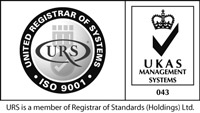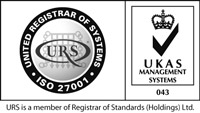We build future proof
projects using Zigbee


Our team of Zigbee expert developers is capable of designing and implementing secure, reliable, and efficient Zigbee-based systems that cater to your specific requirements, whether it be smart home applications, industrial automation, or other IoT solutions.
Our Zigbee services
Custom Zigbee Solution Development
Custom Zigbee-based systems tailored to meet your specific business requirements.
Integration Services
Incorporate Zigbee communication into your existing systems.
Embedded Software Development
Firmware for Zigbee devices such as sensors, actuators, and controllers.
User Interface and User Experience (UI/UX)
User-friendly mobile apps or web dashboards for monitoring and controlling Zigbee devices.
IoT Ecosystem Integration
Integrate Zigbee with other IoT protocols, such as Wi-Fi, Bluetooth, and others, to create complete solutions.
Platform & Backend Development
Backend platforms to collect, store, and analyze data from Zigbee devices, together with cloud-based solutions that provide clients with remote access and control over their networks.
why work with us
Our team consists of skilled software engineers, designers, and project managers with diverse expertise in various technologies and industries. This enables us to handle projects across domains, addressing your specific requirements effectively.
With our flexible partnership, you can easily scale your workforce based on your needs. Whether you need to expand or reduce resources, we provide rapid elasticity for optimal resource allocation and cost-effectiveness.
Embracing Agile principles, we adapt quickly to evolving project requirements, ensuring flexibility, enhanced product quality, and improved customer satisfaction. Through regular iterations and feedback loops, we align software solutions with your evolving business needs.
Our dedicated quality assurance team rigorously tests every aspect of your software to ensure optimal performance, security, and reliability. We adhere to industry-standard QA processes, guaranteeing stable and scalable software solutions.
Our meticulous handover process ensures a smooth ramp-up, facilitating efficient knowledge transfer within your project team. With clear communication channels and collaborative workflows, we align our efforts with your project goals from the start.
Experience seamless and transparent communication channels with us. We provide daily customer support through email, phone, and instant messaging. Our online system for issue reporting, bug tracking, and feature requesting ensures prompt feedback and swift resolution.
As an ISO 9001 and ISO 27001 certified company, we adhere to internationally recognized quality and information security standards, ensuring the delivery of reliable products and solutions.
Count on the stability of our services, even during team members’ absences. Our processes ensure continuous development and support, keeping your projects on track and maintaining momentum.
Where’s Zigbee being used
Healthcare
Remote patient monitoring, medical device interoperability, asset tracking within hospitals, environmental monitoring within healthcare facilities
Home Automation
Smart lighting systems, thermostats and HVAC control, security systems and sensors, smart locks and door sensors, home energy monitors, smart appliances
Building & Facility Management
HVAC system control, access control and security systems, energy management and optimization, elevator and escalator monitoring
Agriculture
Precision agriculture with sensors monitoring soil moisture, temperature, livestock tracking and health monitoring, greenhouse automation and control
Smart Cities
Street lighting control, waste management systems, environmental monitoring, like air quality sensors, public infrastructure monitoring and management
Hospitality
Hotel room automation, like lighting and temperature control, asset tracking within hotels and resorts, guest management and experience enhancement
Transportation
Fleet tracking and management, environmental monitoring within vehicles, asset tracking within transportation hubs
Retail
Inventory management and tracking, smart signage and displays, environmental monitoring for perishable goods, customer movement and behavior analysis
Energy and Utilities
Smart grid technologies, smart metering for electricity, water, and gas, energy management systems for buildings, renewable energy monitoring and control
Industrial Automation
Machinery control and monitoring, asset tracking within warehouses, environmental monitoring in industrial settings, safety system deployments
WHAT IS Zigbee
Zigbee is a high-level communication protocol that operates in the 868 MHz, 902-928 MHz and 2.4 GHz bands, and is built on the IEEE 802.15.4 standard for wireless personal area networks (WPANs). It has low power consumption, long transmission distance, and good security features, which makes it excellent for apps involving machine-to-machine (M2M) communication and smart home systems.
Zigbee is ideal for applications where low data rate, long battery life, and secure networking are important, because it was designed to be simpler and less expensive than other WPANs, such as Bluetooth or Wi-Fi, and as a result, Zigbee devices can operate for years on a single battery.







